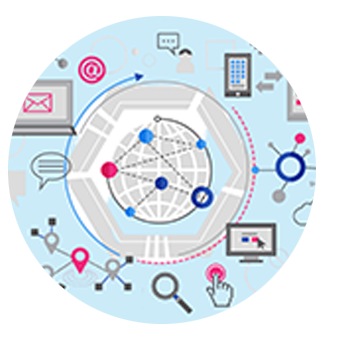
“Seamless experiences happen when every channel works as one. At QoDesign, we design omni-channel journeys that unify touchpoints delivering consistent, personalized interactions across digital and physical spaces.”
We invite you to connect with us at QoDesign Dynamics and share your proposal
What it is
Omnichannel Design is about creating a seamless, unified experience for your users no matter where, when, or how they interact with your brand. In today’s digital-first world, customers expect fluidity. They may browse your product catalog on mobile, add an item to their cart on a laptop, call customer support for a quick question, and then complete the purchase in-store. If each of these experiences feels disconnected, confusing, or inconsistent, the result is frustration and lost opportunities.
Omnichannel Design bridges those gaps. It connects all touchpoints namely: websites, mobile apps, physical stores, customer support, social media, email, and more into one cohesive journey. This isn’t just about making things “look consistent.” It’s about designing interactions and services that maintain continuity, anticipate user intent, and deliver personalization at scale. The goal is simple: build trust, deepen loyalty, and drive measurable business outcomes by ensuring every interaction adds to a unified brand story.
Why Investing in Omnichannel Design Matters
Omnichannel Design is no longer optional, it’s a business imperative. Users live in a world where context shifts rapidly, and they expect brands to keep up:
- Companies with strong omnichannel engagement retain 89% of their customers, compared to just 33% for those with weak strategies (Source: Aberdeen Group).
- Customers who interact across multiple channels spend 30% more than single-channel customers (Source: Harvard Business Review).
- 73% of consumers expect brands to understand their needs seamlessly across all channels (Source: Salesforce).
- Brands investing in omnichannel design see 23x higher customer satisfaction and 9x more customer loyalty (Source: Adobe).
The message is clear: if your brand doesn’t deliver a connected experience, your competitors will.
What You Get
When you work with us, Omnichannel Design translates into actionable frameworks, tools, and experiences tailored to your business:
- Omnichannel Journey Maps: visualizations of how customers move fluidly between platforms and channels.
- Channel-Specific UX/UI Assets: optimized designs for each environment, without losing cohesion.
- Experience Consistency Guidelines: rules that ensure your tone, look, and interactions remain unified.
- Content & Interaction Alignment Plans: ensuring messaging, calls-to-action, and workflows make sense across touchpoints.
- Design System Extensions: adapting your design system to work across multiple platforms and interfaces.
- Personalization Strategy by Channel: tailoring experiences based on user context, behavior, and history.
- Technical Integration Recommendations: aligning with your IT and enterprise architecture to ensure smooth implementation.
Methods We Use
Our approach blends UX research, service design methods, and enterprise architecture thinking to ensure experiences aren’t just delightful but rather sustainable and scalable:
- Cross-Channel User Journey Mapping: charting how users transition between devices and touchpoints.
- Contextual Inquiry & User Research: uncovering user expectations in real-world contexts.
- Design System Adaptation: evolving your design system into a cross-platform experience engine.
- Channel Audits: analyzing UX, content, and interaction flows for gaps and inconsistencies.
- Responsive & Adaptive Design Practices: ensuring digital channels flex seamlessly.
- Data-Driven Segmentation & Personalization Planning: leveraging analytics to tailor experiences by audience.
- Prototyping Across Devices: validating omnichannel concepts through rapid testing and iteration.
What to Expect
Investing in Omnichannel Design sets you up for long-term impact:
- A unified brand experience across digital, physical, and service touchpoints.
- Increased customer satisfaction and trust by removing friction and guesswork.
- Higher engagement and retention through journeys that feel personalized and intuitive.
- Stronger conversions and revenue growth by meeting customers exactly where they are.
- Frictionless transitions between channels that a user can start on mobile and finish in-store without disruption.
- Better internal collaboration between product, design, marketing, and IT teams.
Why Work With Us
Unlike generic design agencies, QoDesign approaches Omnichannel Design through the integrated lens of UX, Service Design, and Enterprise Architecture (EA). That means we don’t just design attractive interfaces; we connect strategy, operations, and systems to ensure omnichannel experiences are both user-centered and operationally viable.
This integration is where many organizations fail. They design for aesthetics but overlook the backstage processes, data flows, and governance required to make omnichannel work. Our frameworks ensure your strategy is scalable, measurable, and sustainable thus delivering not just moments of delight, but a long-term competitive advantage.
In a world where customers expect brands to know them across every interaction, Omnichannel Design is no longer a differentiator but the baseline. The real differentiator lies in how well you execute it. Done right, it transforms fragmented experiences into fluid, personalized journeys that build loyalty and drive business growth. We help you design for continuity, operationalize for scalability, and deliver experiences that users will remember and return to.
